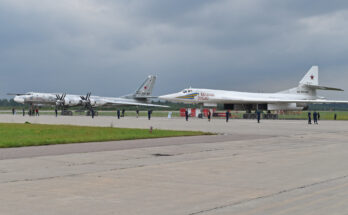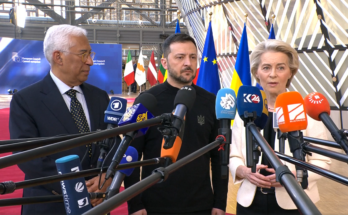by Dan Darling, International Military Markets Analyst, Forecast International.
The much-neglected Serbian armed forces are in need of an equipment overhaul, and the government is betting on Russia to be its provider. The two countries have a centuries-old friendship rooted in ethnic, religious, and political ties. More importantly, Russia has stood in Serbia’s corner over such issues as the 1999 Kosovo War between the Serbia-led Federal Republic of Yugoslavia and NATO and the postwar declaration of independence by the Kosovar Albanian government in February 2008.
Though successive Serbian governments have attempted to straddle a fine line between appeasing nationalists over the Kosovo issue and working toward European Union membership, the Russo-Serbian relationship remains intact. However, it has become more and more of a political tightrope-walking act since EU-NATO/Moscow relations frayed in March 2014 when Russia completed its annexation of Ukraine’s Crimean Peninsula.
Yet as a non-NATO member – with no intention of ever joining the Alliance – Serbia is able to continue focusing on military cooperation with Russia, regardless of consternation in Brussels. This reliance on Russia is a natural byproduct of both long-standing defense ties dating back to the Cold War and the willingness on the part of Moscow to extend loans to Belgrade in order to cover the immediate costs of funding weapons procurements.
The Serbian military is laden with Russian-origin hardware, most of which dates back to the Cold War era, and also includes elements inherited following the breakup of the former Yugoslavia. The country’s once-respectable defense industry has degraded since the breakup of Yugoslavia and the NATO bombing campaign during the 1999 Kosovo War. Defense manufacturing in Serbia today is largely relegated to small arms and gear, though artillery pieces and small training aircraft continue to be developed and produced on limited scales.
Placing added stress on the Serbian military is that state investment in defense has sagged since 2009, a direct result of the country’s economic and financial difficulties. Between 2009 and 2014, Serbia experienced three separate recessions. Most fiscal years, the defense budget not only suffered on a nominal basis, but overall failed to keep pace with inflation. The draft of a technical modernization plan calling for investments in telecommunications and electronic surveillance equipment; the purchase of 8×8 armored vehicles, multirole combat aircraft, advanced radars, and transport helicopters; and an upgrade of the fleet of M-84 tanks was pushed aside in 2009 as the economy entered the first phase of recession, and indefinitely shelved as it failed to gain any traction.
By 2015, the Serbian military had become a hollowed-out husk, its equipment inventory continuing to deteriorate. With concerns over a U.S.-engineered military technical modernization drive getting underway in neighboring Croatia, Serbian Prime Minister Aleksandar Vucic used a January 2016 visit by Russian Deputy Prime Minister Dmitry Rogozin to request the sale of Russian long-range S-300 surface-to-air missile systems. Vucic also inquired about potential purchases of up to 16 Pantsir ground-based air defense systems, a batch of combat helicopters, and six to eight MiG-29M2 twin-engine fighters.
Since then, the two sides have continued discussing potential sales. Serbia’s main interest lies in the MiG-29s as a means of replacing its limited fighter mix of J-22s, MiG-21s, and four MiG-29s, all of which have either exhausted their serviceability or are due to reach the end of their operational lifespans in the coming two to three years. If an estimated $50 million deal is reached, the Russian defense industry will overhaul and modernize the MiG-29s prior to delivery.
In the meantime, Russia has offered its Buk-M2E (NATO codename: SA-17 Grizzly) anti-aircraft mobile missile systems to Serbia as a ground-to-air defense option. Belgrade, however, appears to have balked at the estimated $60- million-per-battalion price tag. This naturally speaks volumes to its ability to procure further armaments no matter how agreeable the terms offered up by Moscow.
For its part, Russia would need to extend a very generous credit line to Belgrade – its normal method for inking arms sale agreements with developing nations – in order to allow Serbia to afford all the equipment it is requesting. With an eye on sowing polarization between European neighbors to offset a united NATO front against it, Moscow may prove a willing lender to its fellow Slavic partner. But, if it does, the last laugh could very well be on the Kremlin, as Serbia’s goals and initiatives (including common defense and security and military training activities with NATO) all point westward.
Please feel free to use this content with Forecast International and analyst attributions, along with a link to the article. Contact Ray Peterson at +1 (203) 426-0800 or via email at ray.peterson@forecast1.com for additional analysis.
The Forecast International International Military Markets series examines the military capabilities, equipment requirements, and force structures inventories of 140 countries, with corresponding coverage of the political and economic trends shaping the defense market outlook for individual countries and regions.
For 50 years, Forecast International intelligence reports have been the aerospace and defense industry standard for accurate research, analysis, and projections. Our experienced analysts compile, evaluate, and present accurate data for decision makers. FI's market research reports offer concise analysis of individual programs and identify market opportunities. Each report includes a program overview, detailed statistics, recent developments and a competitive analysis, culminating in production forecasts spanning 10 or 15 years. Let our market intelligence reports be a key part of reducing uncertainties and mastering your specific market and its growth potential. Find out more at www.forecastinternational.com



